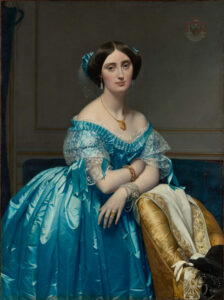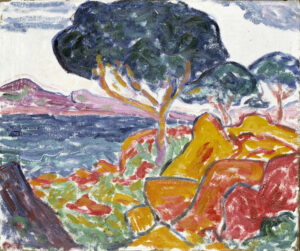
This work immerses us in Claude Monet’s quintessential impressionist universe. “Water Lily Pond” (1900) reveals the painter’s complete mastery in his ability to capture the ephemeral play of light on water.
The composition is magnificently enhanced by the famous green Japanese bridge that arches delicately above a mirror of water studded with pink water lilies and verdant reflections. The vibrant, fragmented brushstrokes create a chromatic symphony where greens, mauves, and pinks mingle in a luminous dance. The vaporous and meditative atmosphere testifies to an almost dreamlike vision of the garden, where the boundaries between reality and reflection dissolve. Here, Monet offers us not simply a representation of nature, but a truly immersive sensory experience.
Additional Information
- Title: “Water Lily Pond” by Claude Monet, 1900
- Dimensions: 89.8 × 101 cm (35 3/8 × 39 3/4 in.)
- Location: The Art Institute of Chicago
- https://www.artic.edu/artworks/87088/water-lily-pond
Claude Monet (1840-1926), a leading figure of the Impressionist movement, revolutionized the art of his time through his obsessive quest for light. In 1893, he created this water garden at Giverny that would become his artistic laboratory and consuming passion during the last three decades of his life.
This painting is part of a series of eighteen similar works created between 1899 and 1900, prefiguring the monumental “Great Decorations” of his final years, the eight Water Lilies compositions. His garden, a meticulous blend of Japanese exoticism and local flora, transcends the simple motif to become a reflection of his artistic soul, the place where the boundary between art and life permanently fades.






